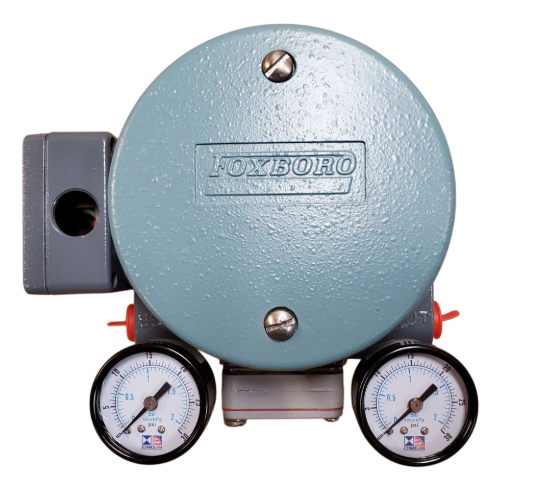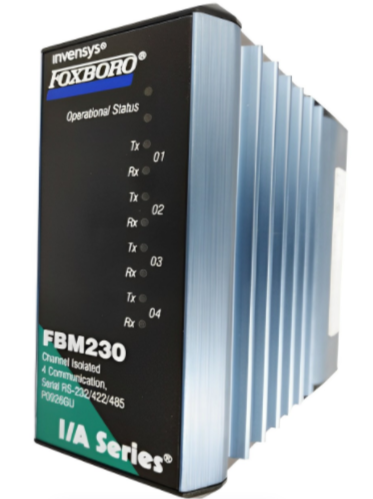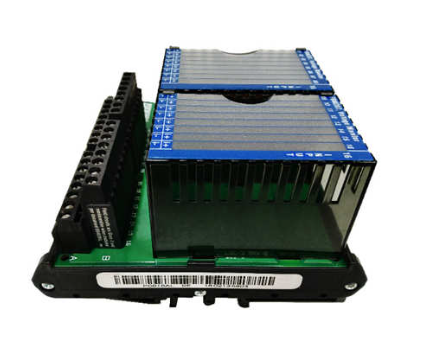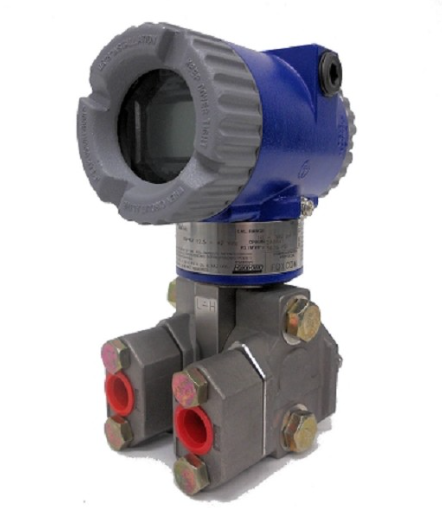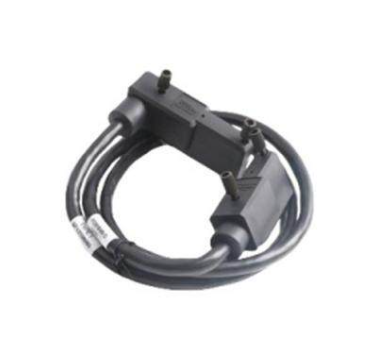The pattern of exploitation and utilization of geothermal energy in China is gradually becoming clear
Geothermal reserves, wide distribution, with clean environmental protection, a wide range of uses, good stability, recycling and other characteristics, compared with solar energy, wind energy is not subject to seasonal, climate, day and night changes and other external factors interference advantages, making it a realistic and competitive choice for the development of new basic energy.
In recent years, in order to strengthen the construction of ecological civilization, control air pollution, and reduce the proportion of fossil energy consumption such as coal, the country has generally paid attention to the development and utilization of clean energy.
In 2016, geothermal energy development was included in the national economic and social development plan for the first time. According to the draft of China's "13th Five-Year Plan" geothermal industry Development Plan, by 2020, China's geothermal heating/cooling area will reach 1.6 billion square meters, plus power generation, planting, breeding, bathing, etc., a total of 72.1 million tons of standard coal can be replaced.
While showing the major development opportunities of the industry, the draft highlights the need to do a good job in geothermal resource potential exploration, the formation of geothermal industry direction and a relatively complete geothermal energy development and utilization management system and policy system, the formation of a relatively complete geothermal energy development and utilization equipment research and development, standard system, monitoring system.
At the 2014 China International Mining Conference, some experts proposed that professional team construction, policy support, industrial structure optimization and resource integration are the key to building geothermal energy into a new growth point of the national economy.
Two years on, what is the current progress of geothermal energy development and utilization? The reporter recently conducted a follow-up interview and found that a geothermal energy development model supported by management, technology and comprehensive utilization is gradually becoming clear.
Build the whole process management system
Geothermal energy is usually harvested locally and used immediately. How to manage is directly related to whether we can make good use of this resource.

"Local geothermal development requires government support and enterprise cooperation. But at present, many places have not set up special geothermal management departments, which leads to difficulties in rational development and utilization of geothermal resources and registration of mining rights." In the view of Wang Yanxin, director of the Economic Institute of the National Geothermal Energy Development and Utilization Research and Application Technology Promotion Center, in the cooperation between enterprises and local geothermal development, the government needs to lead the establishment of a special management department to achieve scientific and efficient development of resources.
In recent years, some successful pilots have also demonstrated the importance of geothermal development management. In 2009, the Hebei provincial government and Sinopec Group launched a pilot cooperation in Xiongxian County, Hebei Province, providing an effective model for the centralized use of geothermal energy. After six years of construction, Xiongxian uses geothermal heating area of 3.85 million square meters, more than 90% of the heating uses geothermal energy, and has built the country's first "smoke-free city". Among them, the "four unifications" played a crucial role. The county government shall formulate preferential policies for geothermal exploration, development, operation and maintenance, and collection of heating fees. The establishment of geothermal management office, the comprehensive utilization of geothermal energy for unified management; To formulate special plans for geothermal development and incorporate them into overall plans for urban construction and economic development; The geothermal resource development concession was granted to Sinopec Group for overall development.
"As of the end of 2015, the city registered 329 geothermal mining rights, heating communities and public construction projects 352, heating area reached 25.03 million square meters, an increase of 12.59 million square meters compared with the end of the 11th Five-Year Plan, an increase of 101%." Geothermal development creates direct economic benefits of 690 million yuan/year and indirect economic benefits of 390 million yuan/year, directly and indirectly driving about 5,000 employees; "Geothermal use is equivalent to saving 326,000 tons of standard coal and reducing carbon dioxide emissions by 775,000 tons per year." This is a set of data obtained from the geothermal management office of the Tianjin Land Resources and Housing Administration.
Tianjin's achievements in the large-scale development and utilization of geothermal energy have made it a template for many other regions to follow. Hou Fuzhi, director of the geothermal management Department of Tianjin Land and Housing Administration Bureau, said that good geological conditions, early start and wide range are the basis for Tianjin to make geothermal bigger, but in order to become stronger, the formation of a set of whole process management system that runs through exploration - mining - use is very key.
In 2014, Tianjin officially issued and implemented the country's first local industry standard in the field of medium and low temperature geothermal drilling - Technical Regulations for medium and low temperature geothermal drilling (DB 12/T 541-2014). During the "12th Five-Year Plan" period, Tianjin has successively issued nine management systems such as the "Procedure for the Public Transfer of geothermal Mineral Rights", and organized the preparation of three local standards such as the "Technical Specifications for medium and low temperature geothermal drilling", "Technical Regulations for the evaluation of geothermal single (pair) well resources" and "Technical Regulations for the Evaluation of shallow geothermal energy Exploration in Tianjin", basically forming a normative system relying on the system and local standards.
In 2015, Tianjin improved the efficiency of the transfer and approval of geothermal mining rights through series to parallel, optimizing evaluation and demonstration procedures, and shortened the time limit for the transfer of exploration rights from the original 199 days to 122 days, increasing the efficiency by 39%. This reform measure has won the recognition of management counterparts.
In addition, Tianjin has achieved full coverage in post-certification supervision. A professional geothermal monitoring team and a team of inspectors have been established, and a dynamic monitoring system for geothermal development has been established relying on information technology, which has realized the instant upload and data sharing of basic data such as extraction volume, recharge volume and temperature, providing a foundation for strengthening resource protection according to law. In the past five years, a total of 195 million yuan has been collected from geothermal mining rights, providing a financial guarantee for geological exploration and resource protection.
Focus on protection and efficient use
In January 2013, four ministries, including the National Energy Administration, the Ministry of Finance, the Ministry of Land and Resources, and the Ministry of Housing and Urban-Rural Development, jointly issued the Guiding Opinions on Promoting the development and Utilization of geothermal energy, putting forward the guiding ideology and strategic goals for the development and utilization of geothermal energy across the country by 2020. The introduction of the document marks that China's geothermal industry has entered a period of rapid development. At present, the annual growth rate of shallow geothermal energy utilization in China is more than 30%, and 31 provinces have carried out shallow geothermal energy development and utilization activities.
Does the large amount of geothermal energy mean that it can be exploited uncontrollably?
The reporter noted that the newly issued Measures for the Implementation of geothermal Resource Management in Tianjin this year introduced the concept of safe utilization for the first time, and institutionalized the policy requirements for surface water heat storage and recharge. In the interview, a number of industry experts also proposed that in the early stage of geothermal development, we should do a good job of resource evaluation, and pay attention to resource protection during development and utilization to ensure the sustainable development of the entire geothermal resources, and can not be over-exploited.

It is understood that at present, the utilization of geothermal resources in China is mainly through the exploitation of geothermal water carrier, but with the increase of mining volume and the continuation of mining time, the circulation of hot water supply is less than the amount of mining, and the trend of hot water level declining year by year is becoming increasingly apparent, which directly affects the deep development of geothermal resources. The problem of geothermal recharge has attracted the attention of many areas, especially in the basin hot fields developed and utilized in the early stage, such as Beijing, Tianjin, North China and other places, the development and utilization model of Xiongxian county has been established, which is "combining mining and irrigation, determining mining by irrigation, and extracting heat without water".
In recent years, while paying attention to the safe development, the intensive and economical utilization of geothermal resources has been placed in a more important position. Among them, the cascade utilization of geothermal resources, modern efficient agriculture, multi-energy integration, etc., are constantly expanding the extension of geothermal resource utilization, and have achieved results.
Tianjin has 11 agricultural planting and aquaculture units using geothermal resources, covering an area of more than 10 million square meters. Beiyuan Home, the largest geothermal heating community project in Beijing, is a comprehensive complex of residential, commercial and office buildings with a heating area of 406,000 square meters, which not only realizes the cascade utilization of geothermal water, but also combines the water source heat pump system to meet the winter heating and summer cooling needs of the community.
The first domestic geothermal cascade utilization national demonstration project - Boye "power generation + industrial application + heating + modern agriculture" integration project has been started, which is higher than 90 ° C for geothermal power generation, 70 ° C ~ 90 ° C for heating, and the remaining tail water for agricultural irrigation. After completion, the installed geothermal power generation capacity will be 5 megawatts and the heating area will be 2 million square meters.
The composite energy utilization system launched in Xinji, Hebei Province in 2013, through geothermal energy, solar energy, biomass energy and other renewable energy and industrial waste heat and conventional energy composite energy utilization, combined with energy dynamic regulation technology system integration, improve energy development and utilization efficiency. It is expected that by 2030, Xinji will form: the leather industrial zone will use deep geothermal energy, sewage source heat pump, industrial waste heat and solar energy to jointly heat; The new town Clean Chemical Park uses deep geothermal energy, industrial waste heat and solar energy to provide heat; The southern area of the central city is dominated by geothermal, supplemented by industrial waste heat, while the other areas of the central city are dominated by deep geothermal heating, supplemented by shallow geothermal energy. Deep geothermal heat is used for central heating in each township. By then, with the municipal construction, the heating area will reach 60 million square meters.
In the petrochemical industry, a number of industrial and civil demonstration projects have been initially built to convert the waste heat of low-grade reinjection sewage into heat sources that can meet the needs of crude oil transport and water heating as well as remote mining areas, replacing the past fuel oil and natural gas heating furnaces, and the effect of energy saving and emission reduction is remarkable.
Actively participate in major national projects
Geothermal resources are generally divided into two ways according to different temperatures: power generation and direct utilization. High temperature geothermal resources are mainly used for power generation; Moderate and low temperature geothermal resources are mainly used directly. For shallow geothermal energy below 25 ° C, ground source heat pumps can be used for heating and cooling.
Geothermal central heating, instead of coal-fired heating boilers and direct-fired loose coal. At present, China's heating boilers and direct-burning loose coal are about 600 million to 700 million tons/year, and vigorously develop geothermal heating has a very important role in improving the atmospheric environment. It is reported that by the end of 2015, China has formed an annual use of geothermal heating/cooling area of 494 million square meters, to replace 14.5 million tons of standard coal, reduce carbon dioxide 37.5 million tons, bringing good economic benefits, social benefits and environmental benefits.
The Fifth Plenary Session of the 18th CPC Central Committee proposed to promote low-carbon and circular development, build a clean, low-carbon, safe and efficient modern energy system, and implement the near-zero carbon emission zone demonstration project. This provides a broad development space for the large-scale utilization of geothermal resources.
Wang Yanxin told reporters that now Sinopec new Star company in Xiongxian pilot, not only for urban heating, but also began to combine with the construction of new rural areas around the city, has signed an agreement with nine towns, in addition to ensuring the heating of Xiongxian urban areas, but also to ensure new rural heating. It is reported that during the 13th Five-Year Plan period, 650,000 square meters of new rural heating is planned, and 480,000 square meters of heating demand has been achieved.

As we all know, the total direct utilization of geothermal resources in China has ranked first in the world for many years. At the end of 2014, the direct use of geothermal in China has undergone gratifying changes, and the proportion of geothermal heating exceeds that of hot spring bathing for the first time, of which the ground source heat pump is 58%, the geothermal heating is 19%, and the hot spring bath is 18%. The energy and technology of geothermal exploitation in China are more prominent. However, by the end of 2015, China's total installed geothermal power capacity was only 27.88 megawatts.
"There is still some way to go to achieve commercial use of dry hot rock, and the problem now is that there are technical bottlenecks, many can not be used, and the efficiency can be used is not too high." Warm Tibetan areas, light Tibetan areas, geothermal can do a lot of work in poverty alleviation and wealth." At the 2016 China International Mining Conference, Wang Guiling, director of the Institute of Hydrogeology and Environmental Geology of the China Geological Survey, introduced that according to the survey and evaluation of geothermal resources conducted by the China Geological Survey during the "Twelfth Five-Year Plan" period, if the implementation of recharge, geothermal heating can replace 1.884 billion tons of standard coal, geothermal power generation has 1/3 of the power generation potential of the Three Gorges power Station. It is of great significance to improve the energy structure of our country.
The draft of China's 13th Five-Year Plan for Geothermal Industry Development proposes five major projects, including comprehensive utilization of geothermal resources in the coordinated development of the Beijing-Tianjin-Hebei region, medium and deep geothermal heating in the Central Plains and Heilongjiang, shallow geothermal energy utilization in the Yangtze River Economic Belt, geothermal power generation in Tibet, and the construction of dry-hot rock power generation demonstration bases. It is not difficult to see that geothermal will soon become an important member of the new energy system and resource poverty alleviation.
It is understood that during the "13th Five-Year Plan" period, the China Geological Survey will focus on geothermal exploration in the southwest, especially in the western Sichuan and southern Tibet regions, the Songliao Plain, the North China Plain and other areas, reduce the exploration risk of commercial funds entering the development of geothermal resources, and promote the large-scale utilization of geothermal resources. In the western region, some technical research and development work such as dry hot rock development test, master construction and cycle test is carried out, hoping to achieve dry hot rock power generation at the end of the "13th Five-Year Plan", "14th Five-Year Plan" and "15th Five-Year Plan" can reach the international leading technical level.
Wang Guiling believes that at present, we should standardize the shallow low-temperature energy utilization market, vigorously promote the utilization of shallow geothermal energy in buildings, heating and cooling, actively promote the utilization of shallow geothermal energy and technical models, and summarize the utilization types and models of different types of areas. At the same time, he said that it should be used scientifically, strengthen recharge, and maintain the sustainable use of geothermal resources and hydrothermal geothermal resources.
Recharge technology in basin area is the main bottleneck problem in geothermal resource development. In recent years, the national geothermal energy development and utilization research and application technology promotion center, Sinopec Xinxing Company, has carried out research on recharge technology, and has achieved 100% recharge of limestone thermal reservoir, and achieved phased results in sandstone formation recharge, and strives to break the bottleneck of large-scale development of sandstone thermal storage through research, and open up a new "blue ocean" of geothermal development. It is reported that at present, Shandong Shanghe, Leling test well recharge rate of more than 80%, has achieved industrialization promotion; The recharge system of Wenlin No. 2 well has obtained the technical patent of "sandstone geothermal tailwater economic recharge system" issued by the State Patent Office, and the natural recharge volume has been maintained at more than 100 cubic meters/hour for two consecutive heating seasons, and the maximum instantaneous recharge volume has reached 148 cubic meters/hour, and the recharge rate has reached 100%.
- EMERSON
- Honeywell
- CTI
- Rolls-Royce
- General Electric
- Woodward
- Yaskawa
- xYCOM
- Motorola
- Siemens
- Rockwell
- ABB
- B&R
- HIMA
- Construction site
- electricity
- Automobile market
- PLC
- DCS
- Motor drivers
- VSD
- Implications
- cement
- CO2
- CEM
- methane
- Artificial intelligence
- Titanic
- Solar energy
- Hydrogen fuel cell
- Hydrogen and fuel cells
- Hydrogen and oxygen fuel cells
- tyre
- Chemical fiber
- dynamo
- corpuscle
- Pulp and paper
- printing
- fossil
- FANUC
- Food and beverage
- Life science
- Sewage treatment
- Personal care
- electricity
- boats
- infrastructure
- Automobile industry
- metallurgy
- Nuclear power generation
- Geothermal power generation
- Water and wastewater
- Infrastructure construction
- Mine hazard
- steel
- papermaking
- Natural gas industry
- Infrastructure construction
- Power and energy
- Rubber and plastic
- Renewable energy
- pharmacy
- mining
- Plastic industry
- Schneider
- Kongsberg
- NI
- Wind energy
- International petroleum
- International new energy network
- gas
- WATLOW
- ProSoft
- SEW
- wind
- ADVANCED
- Reliance
- YOKOGAWA
- TRICONEX
- FOXBORO
- METSO
- MAN
- Advantest
- ADVANCED
- ALSTOM
- Control Wave
- AB
- AMAT
- STUDER
- KONGSBERG
- MOTOROLA
- DANAHER MOTION
- Bently
- Galil
- EATON
- MOLEX
- Triconex
- DEIF
- B&W
- ZYGO
- Aerotech
- DANFOSS
- KOLLMORGEN
- Beijer
- Endress+Hauser
- MOOG
- KB
- Moxa
- Rexroth
- YAMAHA
- Johnson
- Westinghouse
- WAGO
- TOSHIBA
- TEKTRONIX


Email:wang@kongjiangauto.com






